Saturday 8 June
The Horningsea Residents Association invite you to join them to commemorate the 80th anniversary of the Normandy Landings on Saturday 8th June, with a Tea party on the Village Green, come and raise a glass to honour the memory of the men and women who came from all over the world to liberate us.
Join us 14:00-16:00 for a drink and enjoy 1940’s music and home-made cakes.
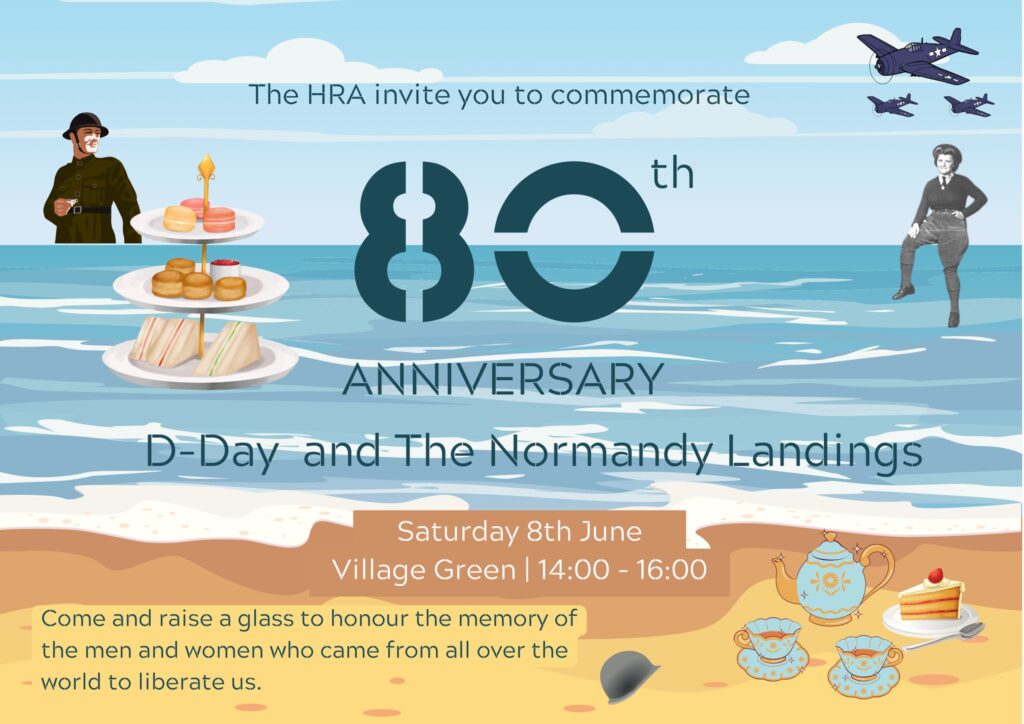
Normandy D-Day 80 year anniversary
John Wilson
Last week we returned from a trip to Normandy following in the footsteps of Ronald Hibbert, the father of Roma Wallis a close friend. Ronald landed on Juno Beach in the first wave of the landings at Berne Sur Mer Roma’s Dad commanded a flail tank of the 22 Dragoon Guards and on landing in the first wave flailed a path through the mine fields on the beach and then on into the town where a mine destroyed his tank, luckily the crew survived to collect a second tank and continue on their mission. By the end of the day the Canadian troops they assisted were several miles inland and the surviving tanks set up camp in the village of Cresseron.
Flail tanks were part of a collection of tanks invented by an unconventional army Major General named Percy Hobart, who overcame army resistance in creating what was to become known as the “Hobarts Funnies”. Sherman and Churchill tanks were modified to carry bridges, Flail tanks for mine clearance, flame throwers, swimming tanks, Fascine carriers, for filling in ditches and a host of other combinations to be used to help the troops to cross the beaches
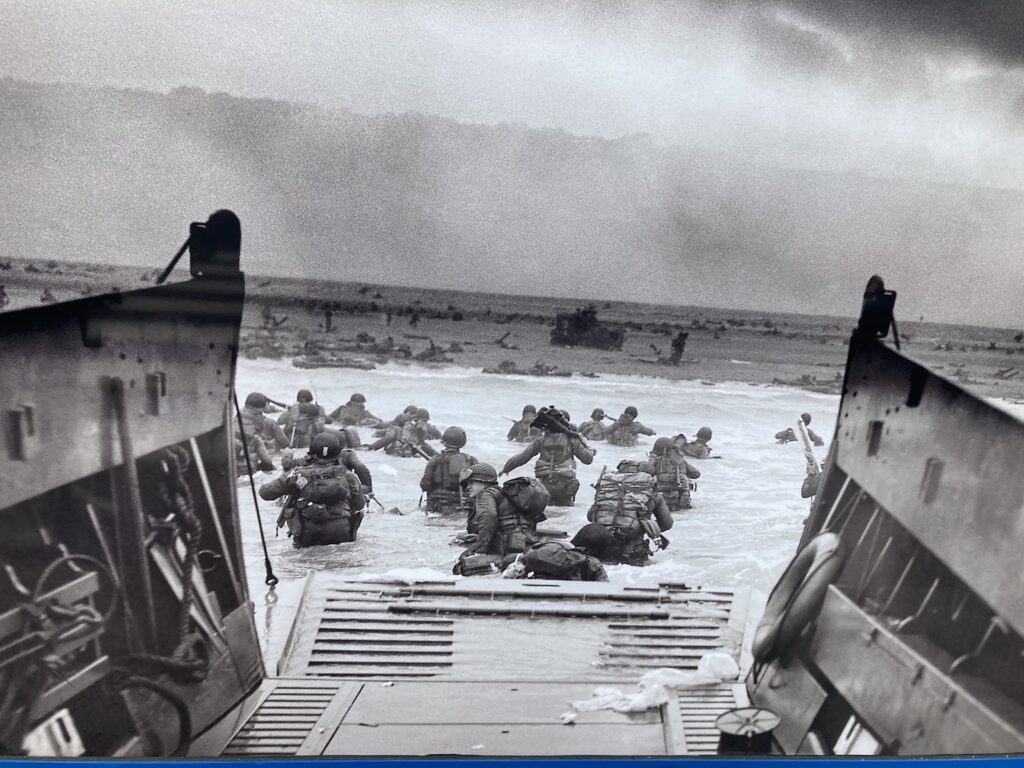
Thirty years ago we made our first trip to the area along with her partner and later her husband Robert Daws who lived at the Priory on the high street, accompanied with her father’s original landing map. At that time the village was not developed and we were able to trace the route over the open ground behind the village to where the tank was destroyed in the then unfilled anti-tank ditch. Now the area has been developed and retracing his route is obscured. Last year we started to follow the route south to Cresserons where by chance we met the Mayor who took us to the town square, where a memorial had been set up to the 22nd Dragoons, adopted by the village. This intern led to an invitation to go back this year for the celebrations on the 7th June where a host of events were planned for the celebrations of the surviving veterans and families of the regiment. Sadly Roma could not attend, but we were put in contact with the organisers of the event who we met last week, both in their 80s and were able to hand over more information about the Dragoons stay in the area, researched by us. We were able to visit the site of the camp where the Dragoons were based, from where they sallied forth on their mine clearing missions across Normandy. It is now open fields but a small stone memorial stands in the hedge to mark the site.
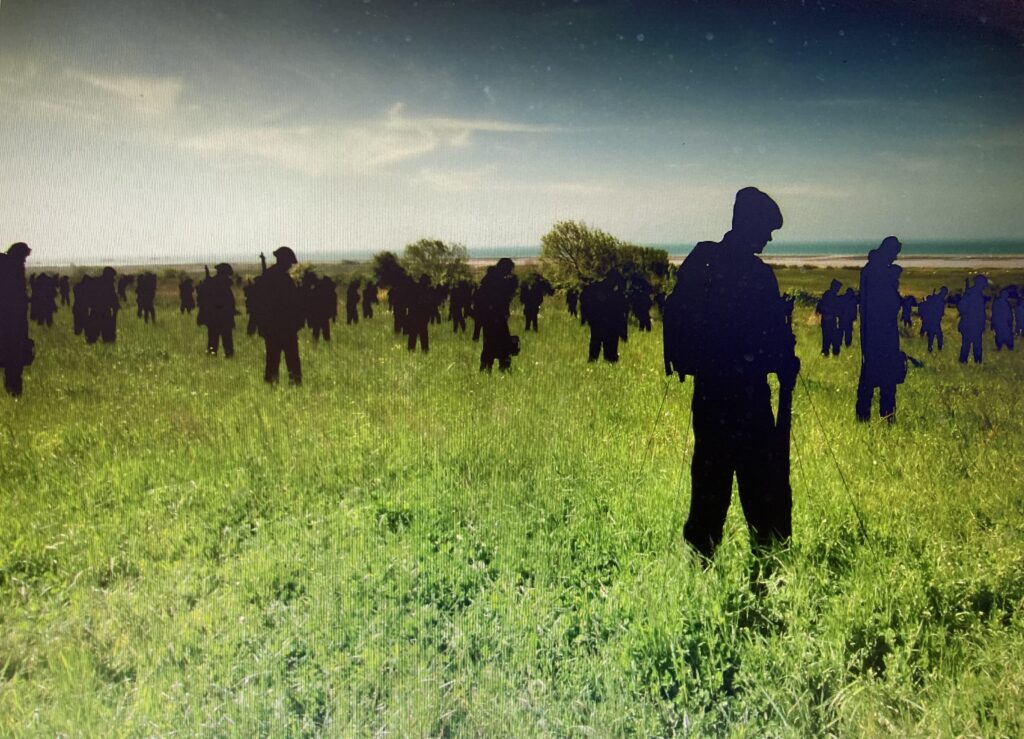
From there we travelled west to the new British memorial at Ver sur Mer, the name of the 1475 British serviceman who died on D day are listed on a hill looking over the Gold landing beach on white stone pillars. In the fields below are the 1475 silhouettes made of steel, representing each of the men and women who fell that day. They are placed beneath the monument in a meadow above the beaches they landed upon.
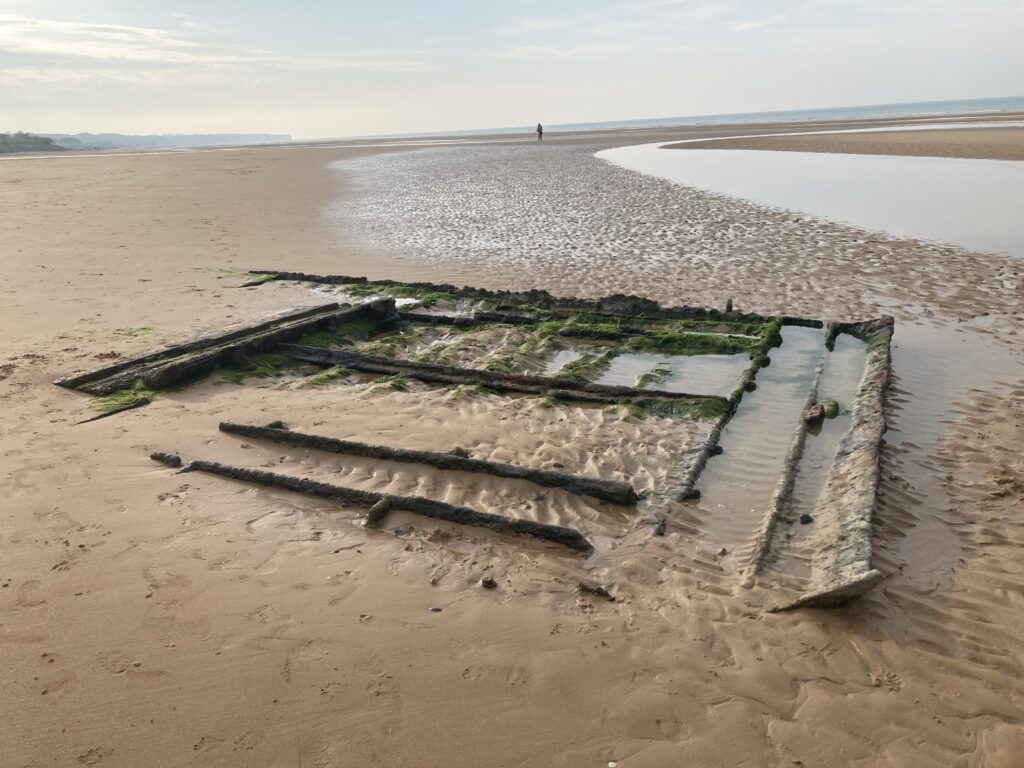
Later on in the week we walked the Beaches of Omaha where thousands of Americans were killed on D Day .Had the Americans not rejected the offer of Hobarts Funnies the outcome may well have been different. Sadly now they all now lie in the cemetery above the bluffs.
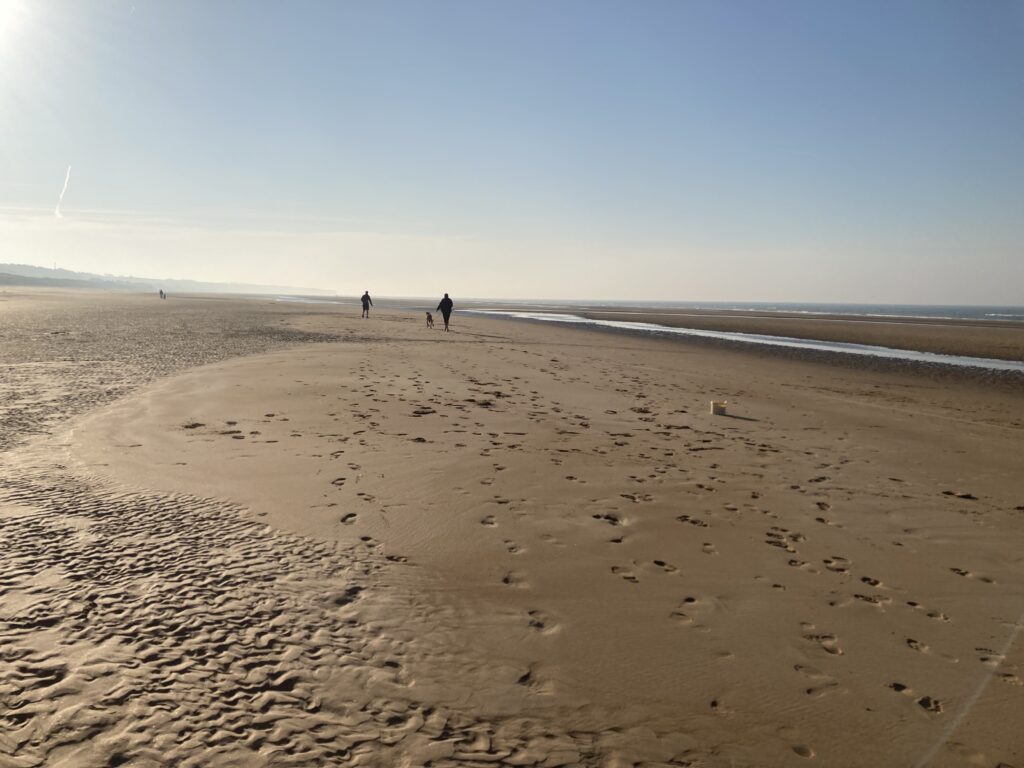
I have walked this beach several times. Imagine Brancaster beach, miles of golden sand with holiday makers, and dog walkers. That is how it is today. The shifting sands still reveal traces of the horror that took place here. This year the bow ramp of a Higgins boat, which landed the soldiers was revealed .There will be many images over the next few days showing the soldiers packed behind a similar door about to land on this beach. Ronald went on flailing mines saving countless lives .in the course of the war he lost three more tanks before ending the war at Bremen. After the war he married and returned to the profession he was in before joining the army, one of the few that made it from the beaches of Normandy until the end
